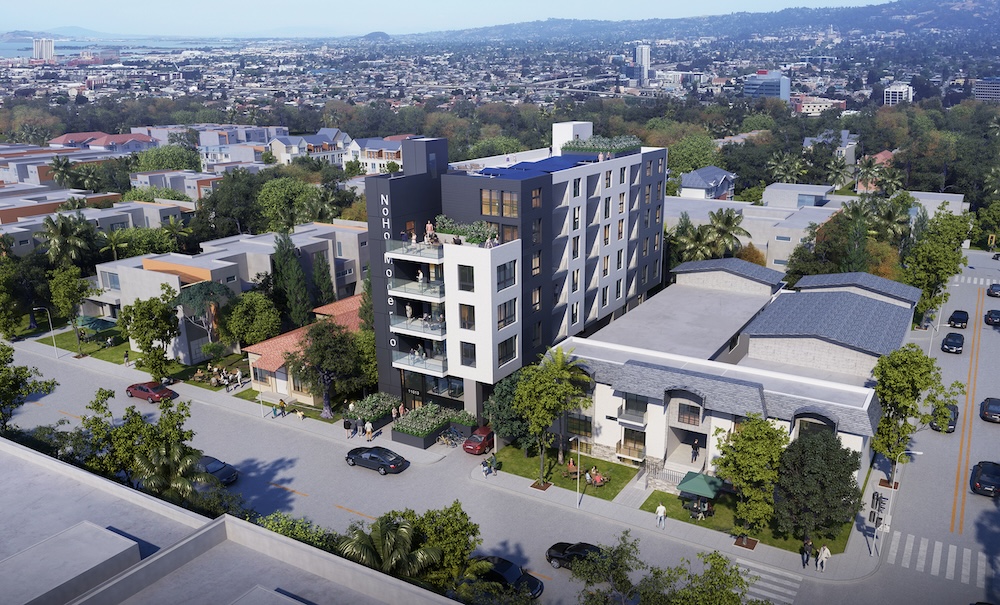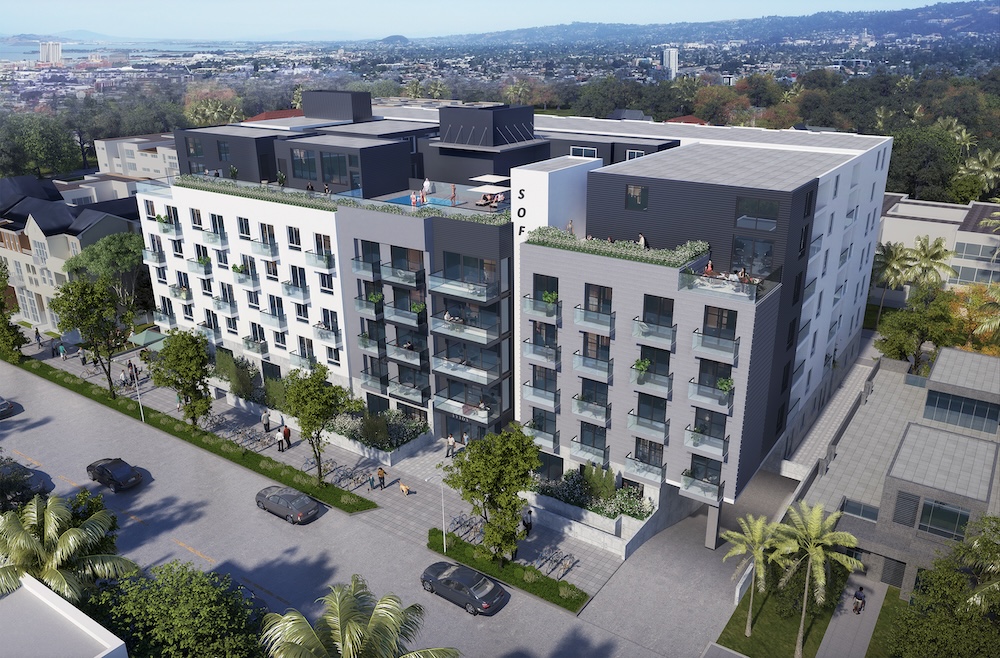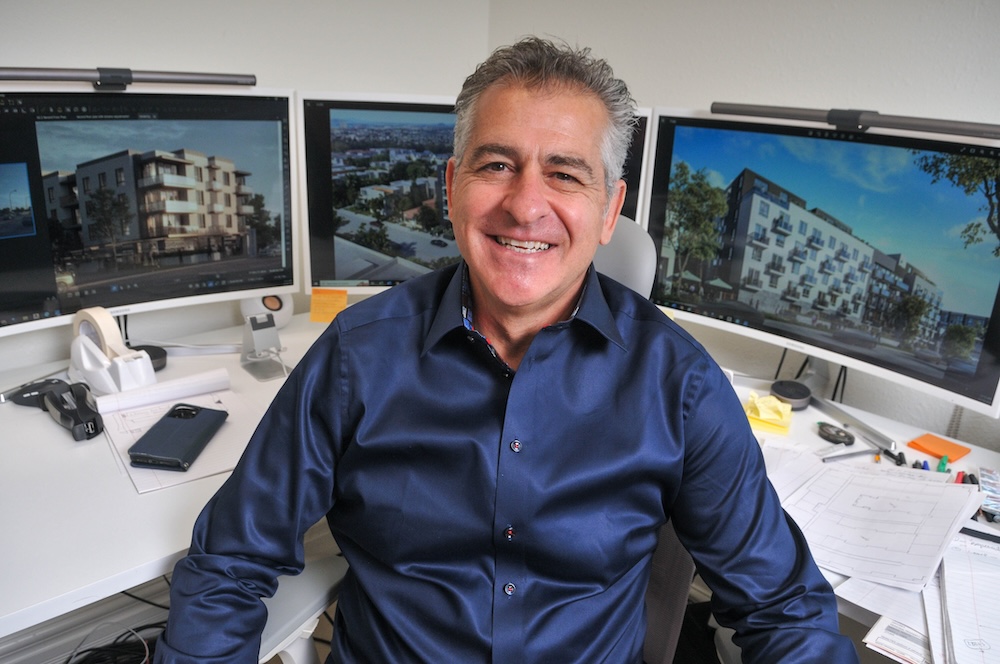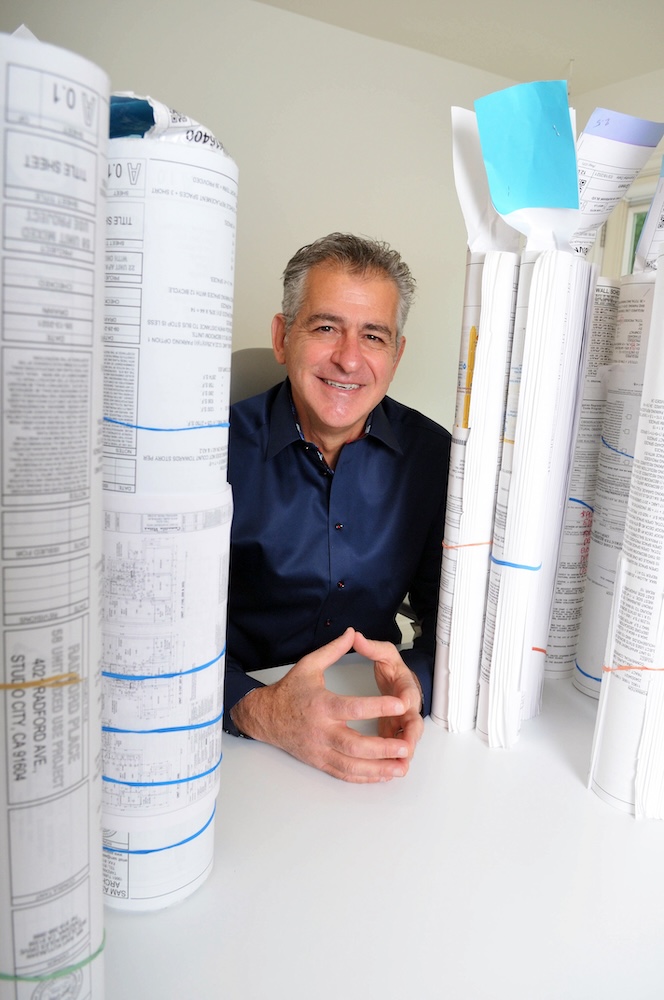As the city continues to incentivize developers to build more affordable housing, much of the legislation allows for the relaxation of typically rigid standards, already beginning to change the look and feel of new projects.
“I am now designing projects that look different than what they used to look like,” said Sam Aslanian, founder and principal of Sam Aslanian Architect Inc., a Tarzana-based architecture firm which has recently shifted its focus from designing mostly market rate to affordable apartments.
Aslanian, who does much of his business in North Hollywood and Studio City, grew up in the San Fernando Valley and has watched density consume his once-suburban-feeling neighborhood.
“I’m seeing these pockets (of the Valley) that are growing quite a bit and becoming these small city centers,” Aslanian said. “One thing I’ve noticed is a lot more homelessness, especially in the last two to five years.”
According to a recent count released by the Los Angeles Homeless Services Authority, an estimated 76,000 people experience homelessness on any given night in Los Angeles County, up 10% from last year.
“I think we all know that Los Angeles is facing a housing crisis,” Sonnet Hui, general manager and vice president of Project Management Advisors Inc., a Chicago-based real estate consultant firm which specializes in development and property management, said.
“And I think it’s showing up in many different ways,” Hui added. “One of which is we’re seeing an increase in people being unhoused because they simply cannot afford to live in the city.”
Over the last few years, as Los Angeles has seen a surge in unhoused individuals, there also seems to be a greater push from the city to address the housing crisis and get individuals off the streets – one of which is illustrated by the incentives the city is offering developers who choose to build 100% affordable housing complexes.
Developer’s incentive

In order to streamline the development of new affordable housing projects, the city and state have passed various forms of legislation, many with the purpose of encouraging developers to make building new affordable housing a top priority.
So, what’s in it for developers?
Of the many incentives offered, one of the most recent ones is Mayor Karen Bass’ Executive Directive One, or ED-1, which was originally issued on Dec. 16 and revised on July 7.
ED-1 states that applications for 100% affordable housing projects – which are defined as multifamily complexes with restricted rent as calculated by the city’s median income level – are exempt from discretionary review processes otherwise required and must be expedited, all with a purpose to “aid in swiftly sheltering people who are unhoused in the city of Los Angeles.”
“These projects are now getting approved much faster,” Aslanian said. “I’m noticing that with my business, certain approvals that would take six to eight weeks now can get approved in one to two weeks. It’s a much faster process than it used to be.”
“I think the appeal is always financial with developers,” Hui said. “Time is money in the development world.”
Another important thing for a developer is to be able to maximize development potential. Or in other words, to be able to generate as much revenue as possible.
“When developers are reviewing a piece of property, they take various factors into consideration,” Aslanian said. “And one of the factors is ‘how many units can I build on this property?’ So, if you can build more units, then theoretically, you can collect more rent.”
Assembly Bill 2334, which is a state-wide incentive, allows for increased density bonuses and added height to developments that are 100% affordable.
“More height equates to more units and to more income in the end,” Hui said.

Another assembly bill that has encouraged developers to take on more affordable housing projects is Senate Bill 35, or SB 35, another streamlining initiative.
One of the more attractive components of the bill is the no parking requirement so long as the development meets certain criteria, such as being located within one-half mile of public transit.
“Building parking in the city is very expensive,” Hui said. “You either go above ground or below ground, but if you go above ground, it impacts (the development potential) because every project has a height limit. The fact that some of these assembly bills require no parking or less parking is a financial incentive to a developer.”
Ripple effects

With certain requirements loosened in order to make affordable housing projects more feasible, architects are noticing a change in their method of work too.
“I think there’s a lot more flexibility in the design as a result of some of the incentives and waivers of development standards that are being offered for affordable housing projects,” Aslanian said.
And as a result, the look of Los Angeles is beginning to change.
“The traditional multifamily structures that you see might be a two-story apartment building, sometimes three or four stories,” Aslanian said. “(Going forward) there’s going to be more of these seven-story, taller apartment buildings.”
His firm is currently designing two 100% affordable housing projects, including one in Granada Hills, which will be a six-story complex with 49 units, and one in North Hollywood, which will be a seven-story complex with 310 units.
In both instances, Aslanian and his firm applied for city approval referencing AB 2334 in order to achieve 33 extra feet of height and maximum density bonuses, dramatically expanding the development potential as a result.
And while Hui and Aslanian both plead that building more affordable housing units is certainly a successful way to address the city’s housing crisis, they recognize that it may be met with some backlash, particularly from unwelcoming neighbors.
“You might have a multifamily zone, for example, next to a single-family zone, and there would have been a height limit for that multifamily zone, but those height limits are going to be exceeded and you’re going to start seeing (single family) homes with tall multifamily structures next to them,” Aslanian said. “And that’s something that might be alarming for some homeowners. But that’s just the trend we’re going to be seeing.”
“It’s the age-old discussion of ‘not in my backyard’ kind of thing,” Aslanian added. “But in reality, we have a housing crisis. And the only way to solve it is to build more housing. And the one-story, single-family, suburban feeling that the Valley has had I think is going to change. Probably more significantly than some people are comfortable with, but it’s just an unavoidable growth.”
